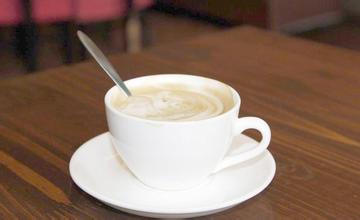Hawaiian Kona Coffee Flavor Manor introduces Hawaiian coffee beans
Hawaii is a paradise for coffee tasting and buying. Each island has several unique places for tourists and locals to taste and buy coffee, ranging from cozy shops to comprehensive coffee knowledge centers. In Hawaii, you can watch the blazing sunset sink into the red-orange sea, feel the fresh, flowery air, and sit on the beach with a cup of coffee. I'm afraid there's no place in the world that can offer you such enjoyment.
In 1813, a Spaniard first planted coffee in Oahu's Manoa Valley, which today is the main campus of the University of Hawaii. In 1825, an English agriculturist named John Wilkinson transplanted coffee seeds from Brazil to the coffee plantation of Chief Birch on Oahu. Three years later, an American missionary named Samuel Reverend Ruggles brought branches of the coffee tree from Chief Birch's Garden to Kona. The coffee is a descendant of the Arabica coffee tree that first grew in the Ethiopian highlands. To this day, Kona coffee continues its noble and ancient lineage. The quality of Kona coffee is suitable for the right location and climate. Coffee trees grow on volcanic slopes, and their location ensures the altitude at which coffee grows; dark volcanic ash soils provide the minerals coffee needs. This is probably due to Kona's abundance of volcanic black mud, which is moderately acidic, mineral-rich, and contains the right amount of water. And every afternoon, a cloud drifts over Kona Island to block out the sun to protect the fragile coffee saplings.
The weather conditions are so favourable that the sun gently passes through the steamy air in the morning, the mountains become wetter and foggy in the afternoon, the clouds surge in the air as natural umbrellas for coffee trees, and the nights become clear and cool. Natural conditions allow the average yield of Kona coffee to be very high, reaching 2240 kg/ha, compared with 600 - 900 kg/ha in Latin America.
Kona coffee is grown without shade, and Hawaii has an island climate, which often has a dark cloud that creates a shading effect. Hawaiian coffee farmers tend to prepare their plantations for a fairly clean, fertile land, and farmers 'meticulous management of the climate in which coffee grows. Making Kona coffee the specialty coffee on the market.
Cover factor editor
environmental requirements
Kona coffee
Kona coffee
Soil: The rich tropical volcanic soil of Hawaii provides the nutrients of the dense Kona coffee tree.
Altitude: The right altitude between 2100 and 3600 meters and the cool moonlight promote the slow ripening of Kona coffee fruits and create a rich, moist taste.

Important Notice :
前街咖啡 FrontStreet Coffee has moved to new addredd:
FrontStreet Coffee Address: 315,Donghua East Road,GuangZhou
Tel:020 38364473
- Prev

Colombian coffee beans with mild climate introduce the taste of Colombian coffee beans
Colombia's mild climate, humid air, and diverse climate make it a harvest season all year round, with different kinds of coffee ripening at different times. What they grow is Arabica coffee beans of unique quality, and the coffee made from this coffee bean has a rich taste and endless aftertaste, which can be called fine coffee. Nowadays, many people combine Colombian coffee with high quality and delicious coffee.
- Next

Flavor and taste of Sumatra coffee farm in Indonesia Sumatra boutique coffee beans
Manning coffee is considered to be the most mellow coffee in the world. When tasting Mantenin, you can feel obvious lubrication on the tip of the tongue and low acidity, but this acidity can also be obviously tasted. Leaping slight acid mixed with the richest aroma, so that you can easily feel the lively factor in the mild fragrance. In addition, this kind of coffee has a light taste.
Related
- Detailed explanation of Jadeite planting Land in Panamanian Jadeite Manor introduction to the grading system of Jadeite competitive bidding, Red bid, Green bid and Rose Summer
- Story of Coffee planting in Brenka region of Costa Rica Stonehenge Manor anaerobic heavy honey treatment of flavor mouth
- What's on the barrel of Blue Mountain Coffee beans?
- Can American coffee also pull flowers? How to use hot American style to pull out a good-looking pattern?
- Can you make a cold extract with coffee beans? What is the right proportion for cold-extracted coffee formula?
- Indonesian PWN Gold Mandrine Coffee Origin Features Flavor How to Chong? Mandolin coffee is American.
- A brief introduction to the flavor characteristics of Brazilian yellow bourbon coffee beans
- What is the effect of different water quality on the flavor of cold-extracted coffee? What kind of water is best for brewing coffee?
- Why do you think of Rose Summer whenever you mention Panamanian coffee?
- Introduction to the characteristics of authentic blue mountain coffee bean producing areas? What is the CIB Coffee Authority in Jamaica?

